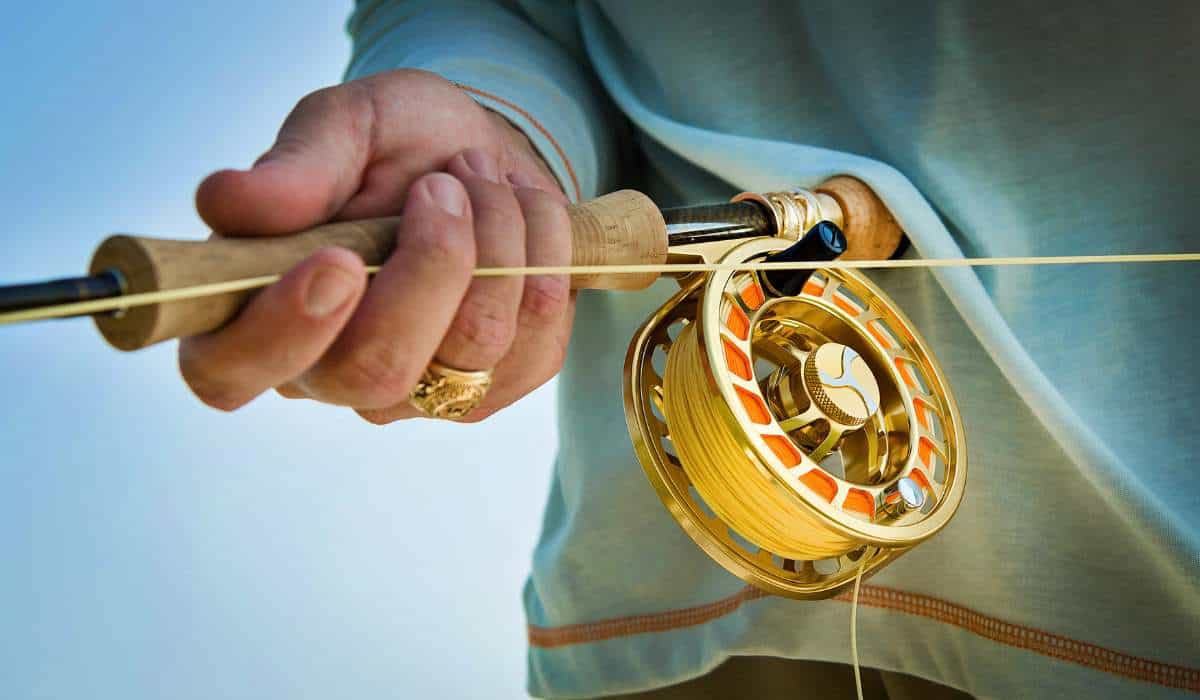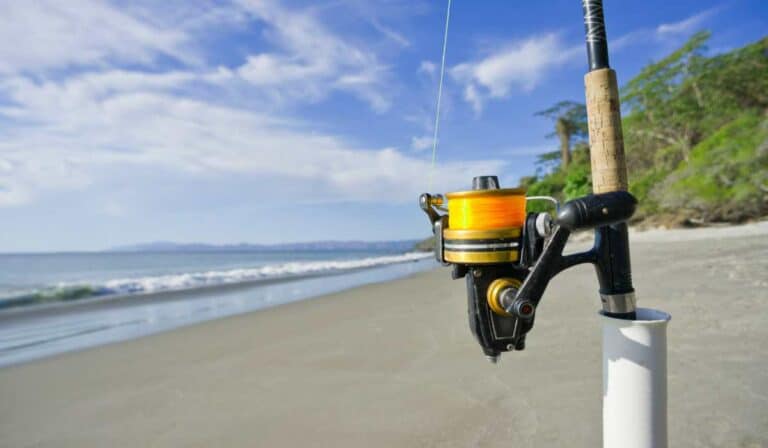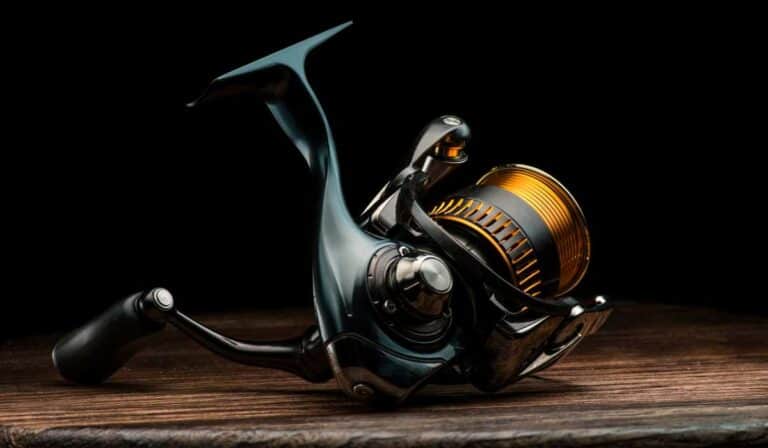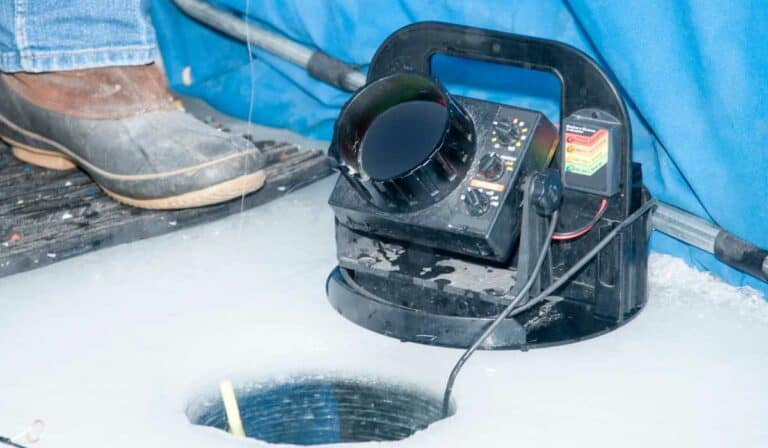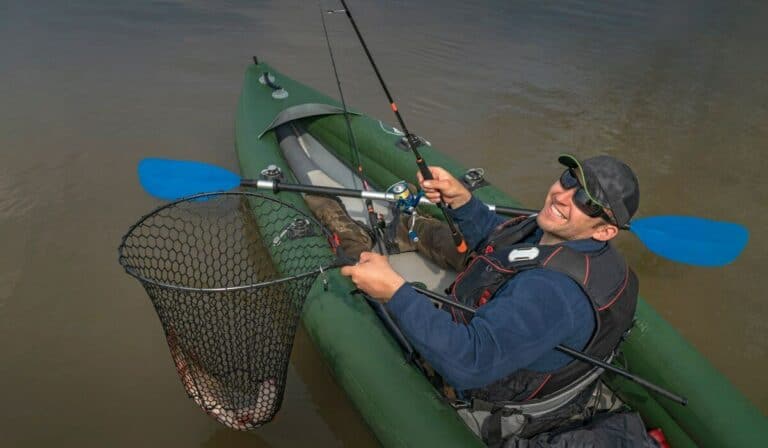Types of Fishing Reels – The Complete Guide
There are several types of fishing reels, each designed for a specific type of fishing. Understanding the different types of reels and their uses can help you choose the right one for your fishing needs.
Table of Contents
Types of Fishing Reels
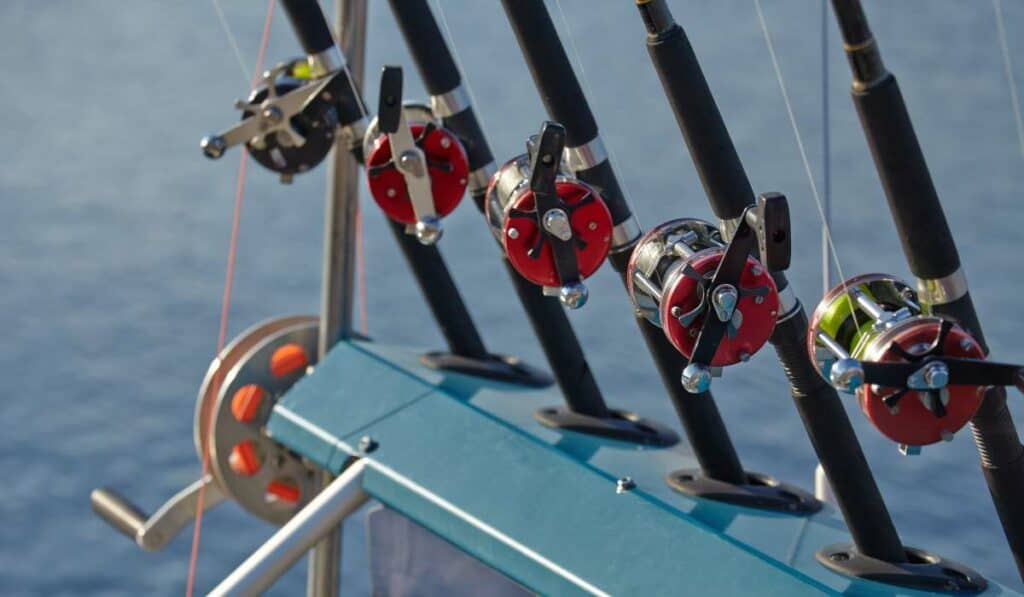
Spinning Reels
Spinning reels, also known as open-face reels, are one of the most popular types of fishing reels. They are easy to use, making them a great choice for beginners. Spinning reels are versatile and can be used in a variety of fishing situations, from freshwater fishing to offshore fishing.
Baitcasting Reels
Baitcasting reels are known for their precision and control, making them a favorite among experienced anglers. They are ideal for casting larger lures and bait, and are often used for heavy-duty fishing. Baitcasting reels require some practice to master, but once you get the hang of it, you’ll appreciate the control and accuracy they offer.
Spincast Reels
Spincast reels, or closed-face reels, are another great option for beginners. They are easy to use and are generally more affordable than other types of reels. Spincast reels feature a button that you press and hold during your forward cast. The line peels out, and you let go of the button when you want the line to stop.
Fly Fishing Reels
Fly fishing reels are specifically designed for fly fishing. They have a simple design and are used primarily to hold the fishing line. A Fly reel has a large diameter to allow for the lengthy fly line and to make retrieval faster.
Trolling Reels
Trolling reels are designed for trolling, a method of fishing where bait is drawn through the water behind a moving boat. These reels are built to handle heavy line, large fish, and long hours of fishing. They often have line counters for precise depth placement.
Surf Fishing Reels
Surf fishing reels are designed for casting long distances from shorelines. They are built to withstand the corrosive saltwater environment and are generally larger and stronger than other types of reels.
Click here to read about Best Time to Catch Tuna in Louisiana
The Role of Fishing Reels in Different Types of Fishing
Different types of fishing require different types of reels. Here’s a brief overview of the role of fishing reels in different types of fishing:
Freshwater Fishing
Freshwater fishing is often done in lakes, rivers, and streams. Spinning reels and spin cast reels are commonly used for freshwater fishing due to their ease of use and versatility.
Saltwater Fishing
Saltwater fishing can be done from a beach, pier, or boat, and it often involves larger fish species. Therefore, stronger and more durable reels like surf fishing reels and trolling reels are typically used.
Ice Fishing
Ice fishing requires a special type of reel designed to withstand cold temperatures. These reels are small and lightweight, making them easy to handle in cold conditions.
How to Choose the Right Fishing Reel
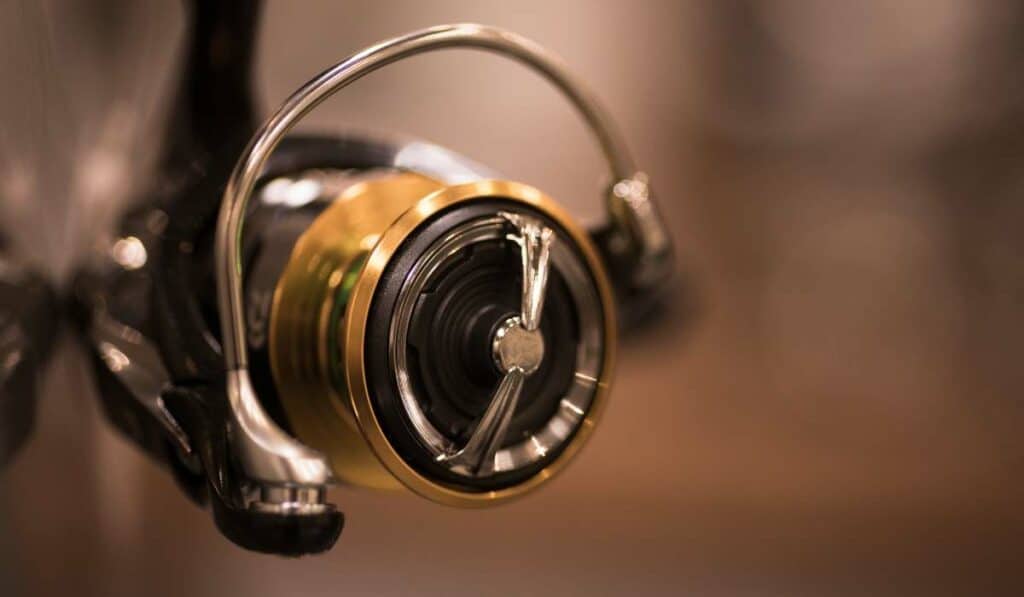
Choosing the right fishing reel depends on several factors, including the type of fishing you plan to do, your skill level, and your budget. Here are some factors to consider:
- Type of Fishing: The type of fishing you plan to do is the most important factor to consider. For example, if you’re going freshwater fishing, a spinning reel or spincast reel would be a good choice. If you’re going saltwater fishing, you might want to consider a surf fishing reel or a trolling reel.
- Skill Level: Your skill level is another important factor. If you’re a beginner, you might find a spincast reel or spinning reel easier to handle. If you’re more experienced, you might prefer the control and precision of a baitcasting reel.
- Budget: Fishing reels can range in price from affordable to expensive, so consider how much you’re willing to spend. Keep in mind that while high-end reels often offer more features and durability, there are plenty of affordable options that are suitable for beginners and casual anglers.
The Pros and Cons of Each Type of Fishing Reel
Each type of fishing reel has its pros and cons. Understanding these can help you make an informed decision when choosing a reel.
Spinning Reels
Pros:
- Easy to use
- Versatile
- Suitable for a wide range of fishing situations
Cons:
- May not be as durable as other types of reels
- Not ideal for very heavy line or large fish
Baitcasting Reels
Pros:
- Offers a high level of control and precision
- Ideal for heavy line and large fish
Cons:
- Requires some practice to master
- Can be more expensive than other types of reels
Spincast Reels
Pros:
- Easy to use
- Generally more affordable
Cons:
- Not as durable or versatile as other types of reels
- Not ideal for heavy line or large fish
Fly Fishing Reels
Pros:
- Specifically designed for fly fishing
- Allows for a unique fishing technique
Cons:
- Requires a specific type of fishing line
- Requires some practice to master
Trolling Reels
Pros:
- Builtto handle heavy line and large fish
- Ideal for trolling, a popular method of fishing
Cons:
- Not as versatile as other types of reels
- Can be more expensive than other types of reels
Surf Fishing Reels
Pros:
- Designed for casting long distances
- Built to withstand the corrosive saltwater environment
Cons:
- Generally larger and heavier than other types of reels
- Not ideal for other types of fishing
Click here to read about Best Ultralight Fishing Rod/Reel Combos
How to Use Different Types of Fishing Reels
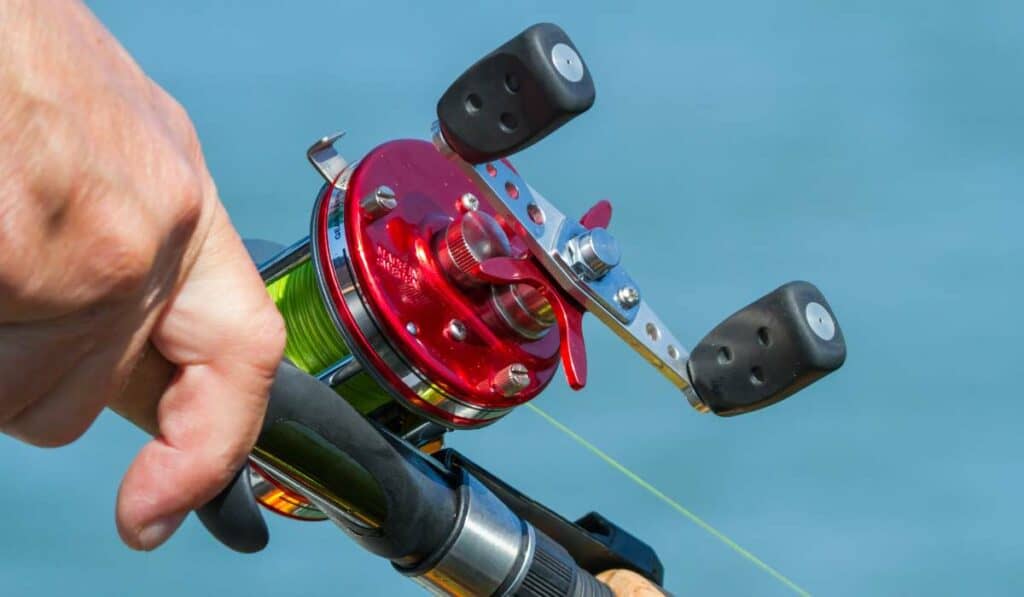
Knowing how to properly use your fishing reel can greatly enhance your fishing experience. Here’s a brief guide on how to use different types of fishing reels:
How to Cast a Spinning Reel
- Hold the rod with your dominant hand and open the bail (the metal piece that holds the line in place) with your other hand.
- Hold the line against the rod with your index finger.
- Swing the rod back and then forward in a smooth motion, releasing your finger from the line as you swing forward.
- Close the bail with your hand after the cast.
How to Cast a Baitcaster
- Hold the rod with your dominant hand and turn the handle so the reel is in a vertical position.
- Press the spool release button and hold the line against the rod with your thumb.
- Swing the rod back and then forward in a smooth motion, releasing your thumb from the line as you swing forward.
- Apply slight pressure to the line with your thumb to control the speed of the line.
Tips for Buying a Fishing Reel
When buying a fishing reel, consider the following tips:
- Understand Your Needs: Consider the type of fishing you’ll be doing, the species you’re targeting, and your skill level.
- Choose the Right Type: Choose a reel type that suits your needs. For example, beginners might prefer a spinning or spincast reel, while more experienced anglers might prefer a baitcasting reel.
- Consider the Gear Ratio: The gear ratio of a reel determines how quickly the line is retrieved. A high gear ratio retrieves the line quickly, which is useful when fishing for fast-swimming fish.
- Check the Line Capacity: Make sure the reel can hold enough line for the type of fishing you’re planning to do.
- Consider the Material: Reels made from materials like aluminum and stainless steel are generally more durable and resistant to corrosion.
Maintenance and Care for Fishing Reels
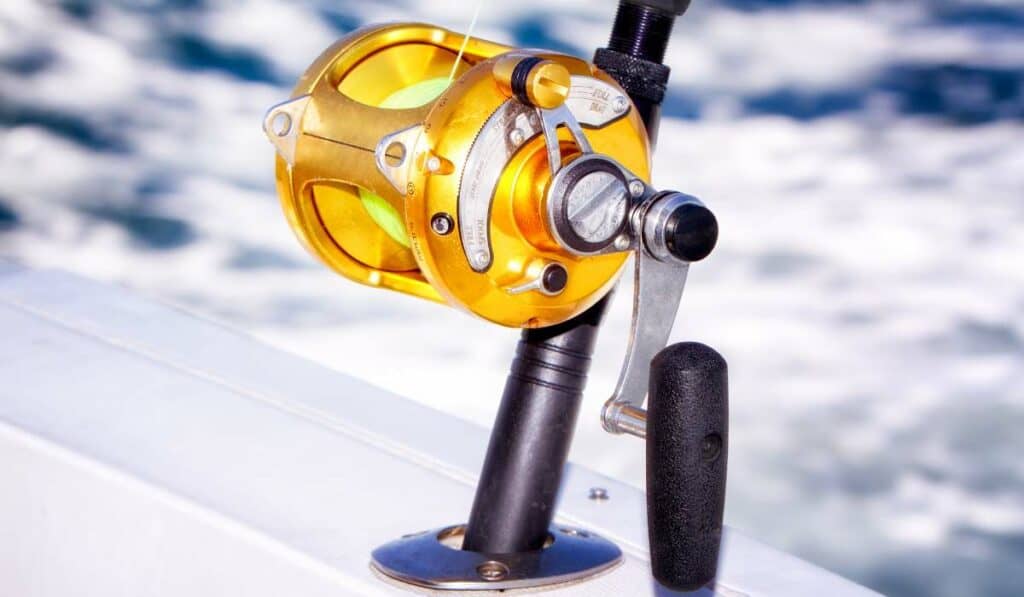
Proper maintenance and care can extend the life of your fishing reel and ensure it performs well. Here are some tips:
- Clean Your Reel Regularly: After each fishing trip, clean your reel to remove dirt, salt, and other debris. You can use warm water and a mild detergent.
- Lubricate Your Reel: Regularly lubricate your reel to keep it running smoothly. Use a lubricant designed for fishing reels.
- Store Your Reel Properly: When not in use, store your reel in a cool, dry place. If possible, store it in a case to protect it from dust and moisture.
Click here to read about Best Underwater Cameras for Ice Fishing
Frequently Asked Questions Fishing Reels
What are the different types of fishing reels?
There are several types of fishing reels, including spinning reels, baitcasting reels, spincast reels, fly fishing reels, trolling reels, and surf fishing reels. Each type of reel is designed for a specific type of fishing and has its own set of advantages and disadvantages.
Which type of fishing reel is best for beginners?
Spinning reels and spincast reels are often recommended for beginners due to their ease of use. They are versatile and can be used in a variety of fishing situations.
What is a baitcasting reel?
A baitcasting reel is a type of fishing reel known for its precision and control. It’s ideal for casting larger lures and bait, and is often used for heavy-duty fishing. Baitcasting reels require some practice to master.
What type of reel is used for fly fishing?
Fly fishing reels are specifically designed for fly fishing. They have a simple design and are used primarily to hold the fishing line. Fly reels have a large diameter to allow for the lengthy fly line and to make retrieval faster.
What is a trolling reel?
Trolling reels are designed for trolling, a method of fishing where bait is drawn through the water behind a moving boat. These reels are built to handle heavy line, large fish, and long hours of fishing. They often have line counters for precise depth placement.
How do I choose the right fishing reel?
Choosing the right fishing reel depends on several factors, including the type of fishing you plan to do, your skill level, and your budget. Consider the type of fishing, your experience level, and the specific features you need in a reel.
How do I maintain and care for my fishing reel?
Regular cleaning and lubrication can help extend the life of your fishing reel. After each fishing trip, clean your reel to remove dirt, salt, and other debris. Regularly lubricate your reel to keep it running smoothly. When not in use, store your reel in a cool, dry place.
What are the pros and cons of spinning reels?
Spinning reels are easy to use and versatile, making them suitable for a wide range of fishing situations. However, they may not be as durable as other types of reels and are not ideal for very heavy lines or large fish.
What are the pros and cons of baitcasting reels?
Baitcasting reels offer a high level of control and precision and are ideal for heavy line and large fish. However, they require some practice to master and can be more expensive than other types of reels.
What are the pros and cons of spincast reels?
Spincast reels are easy to use and generally more affordable, making them a good choice for beginners. However, they are not as durable or versatile as other types of reels and are not ideal for heavy line or large fish.
Conclusion
Choosing the right fishing reel can make a significant difference in your fishing experience. By understanding the different types of fishing reels and their uses, you can choose a reel that suits your needs and enhances your enjoyment of fishing. Remember to take good care of your reel to ensure it lasts for many fishing trips to come.
Please note that this is a general guide and the specific details may vary depending on the specific type and model of fishing reel. Always refer to the manufacturer’s instructions for specific information about your reel.

